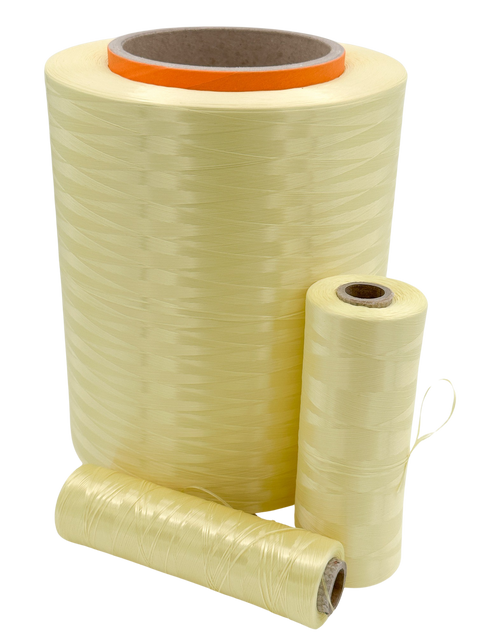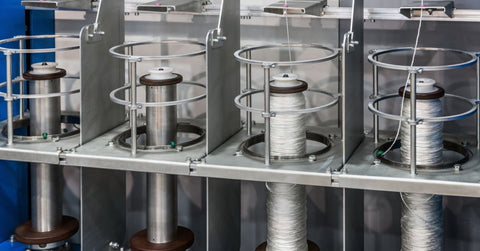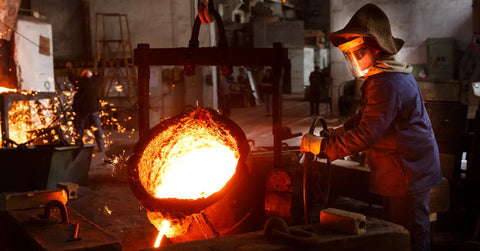The textile industry has transformed from simple production into a cutting-edge field of material science, where fibers have extraordinary properties. Exploring the world of high-performance textiles unveils a realm of innovation. These materials endure extreme conditions while delivering unmatched durability, strength, and functionality.
These advanced fabrics have revolutionized the aerospace, healthcare, and military/defense industries, offering solutions once deemed impossible. By merging chemistry, physics, and engineering, high-performance textiles open endless possibilities for product designers and engineers while pushing the boundaries of what fabrics can achieve.
The Evolution of High-Performance Textiles
The development of high-performance textiles traces back to military and aerospace innovations during the mid-20th century. Early engineers focused on creating materials that could withstand extreme temperatures, resist chemical exposure, and provide superior protection for personnel and equipment.
The 1960s marked a pivotal moment with the introduction of aramid fibers, which offered unprecedented strength-to-weight ratios. This breakthrough laid the foundation for modern ballistic protection and heat-resistant applications. Subsequently, the development of carbon fiber technology in the 1970s opened new possibilities for lightweight, high-strength composites.
The 1980s and 1990s saw rapid expansion as manufacturing processes became more refined and cost-effective. Fibers like Kevlar® and ultra-high-molecular-weight polyethylene (UHMWPE) emerged with exceptional strength and resilience, while Vectran™ and carbon fiber set new standards for durability and precision in demanding applications. These advances made high-performance materials accessible to commercial markets beyond their original military and aerospace origins.
Key Features of High-Performance Textiles
High-performance textiles stand out from conventional materials due to a range of properties that enhance their functionality and adaptability. We’ll break down these defining features, explaining the unique advantages they bring to a variety of applications.
Exceptional Strength-to-Weight Ratios
High-performance textiles are engineered to deliver remarkable strength while keeping weight to a minimum. This unique characteristic allows them to support heavy loads and resist tearing without adding bulk. Whether used in aerospace applications or advanced sporting equipment, this feature supports peak performance without compromising on efficiency or maneuverability.
Chemical Resistance
One of the standout properties of high-performance textiles is their ability to withstand exposure to corrosive chemicals. Designed to maintain integrity in the presence of solvents, acids, and other harsh substances, these fibers are invaluable in industrial environments where conventional materials may fail. For professionals in the chemical processing or oil and gas industries, this chemical resilience reduces wear and tear and guarantees reliable operation over time.
Temperature Stability
High-performance textiles maintain their functionality across extreme temperature ranges, making them ideal for demanding conditions. Cold climates, high-temperature industrial processes, and other extreme environments have little impact on the structural integrity of these materials. Many high-performance fibers can withstand temperatures exceeding 500 degrees Fahrenheit, ensuring consistent performance and reliability whether in arctic expeditions or high-heat machinery.
Abrasion Resistance
Durability is a hallmark of high-performance textiles, with abrasion resistance playing a crucial role. This property protects against wear and surface damage caused by friction to extend the usable lifespan of textiles. For applications like protective gear or heavy-duty equipment, this means fewer replacements, unmatched reliability, and long-term cost savings despite the initial investment.
By combining these advanced features, high-performance textiles offer a versatile and reliable solution across industries. These attributes make them indispensable for applications where traditional materials simply cannot keep up.

Applications Across Industries
Sports and Activewear
The sports industry has embraced high-performance textiles to enhance athlete performance and comfort. Moisture-wicking fabrics consist of specialized fibers to transport perspiration away from the skin, maintaining a comfortable body temperature during intense physical activity.
Compression garments incorporate elastomeric fibers that provide graduated pressure to improve circulation and stave off muscle fatigue. These applications demonstrate how textile engineering directly impacts human performance and recovery.
Healthcare
High-performance textiles in healthcare offer strength, flexibility, and resistance to tearing, making them essential for different uses. They enhance orthopedic bracing by providing durable, adaptable support and improve catheter designs with structural integrity for minimally invasive procedures.
The inherent qualities of these textiles provide hygienic, long-lasting solutions while reducing risks and costs associated with medical equipment failure. These innovations advance patient care while meeting the requirements of the healthcare industry.
Military and Defense
Defense applications demand the highest levels of performance from textile materials. Ballistic protection systems utilize ultra-high molecular weight and aramid fibers to create lightweight armor capable of stopping high-velocity projectiles.
Chemical protective clothing provides barriers against biological and chemical threats while maintaining wearer mobility and comfort. These applications require materials that can perform reliably under various conditions.
Automotive and Aerospace
Professionals in the transportation industry use high-performance textiles for both structural and safety applications. Carbon fiber composites provide exceptional strength while reducing vehicle weight, improving fuel efficiency, and performance.
Airbags must deploy rapidly in the event of a collision while maintaining tear resistance under extreme stress. The precision required for these applications demands high quality and performance from every fiber.
Oil and Gas
Energy sector applications expose textiles to harsh chemicals, extreme temperatures, and high mechanical stress. Filtration systems utilize specialized fibers to separate contaminants from process streams while withstanding corrosive environments.
Protective clothing for oil and gas workers must provide flame resistance, chemical protection, and durability while maintaining comfort during extended wear.
Innovations Driving the Industry
Smart textile integration is a significant advancement in the performance of materials. Conductive fibers can incorporate electronic components directly into fabric structures. This creates textiles that can monitor physiological parameters or environmental conditions.
Recycling and sustainability initiatives are driving innovation toward environmentally responsible high-performance materials. Creators of new fiber technologies use recycled content while maintaining superior performance to address environmental concerns without compromising functionality.
Challenges in the High-Performance Textile Industry
Manufacturing consistency is a challenge for high-performance textile producers. The complex processing requirements and tight tolerances demand sophisticated quality control systems and highly skilled technicians. Testing and certification processes for specialized applications require extensive validation and regulatory approval. This lengthy process can delay product introduction and increase development costs.

The Future of High-Performance Textiles
Emerging technologies promise to expand the capabilities of high-performance textiles even further. Artificial intelligence and machine learning are being applied to fiber design in order to enable the prediction of material properties before physical production.
Biotechnology integration offers possibilities for bio-based high-performance fibers that could reduce environmental impact while maintaining superior properties. These developments could revolutionize sustainability in the textile industry. Additive manufacturing techniques are beginning to influence textile production, allowing for complex three-dimensional structures that were previously impossible to create using traditional weaving or knitting methods.
Fuel Your Performance With Rocket-Fibers
The landscape of high-performance textiles continues to evolve at an unprecedented pace. As we advance into new technological frontiers, remember the importance of partnering with experienced suppliers. Exploring the world of high-performance textiles requires expertise, quality assurance, and innovative thinking.
At Rocket-Fibers, our decades of experience in high-performance fiber technology position us as your trusted partner for advanced textile solutions. Whether you’re developing cutting-edge protective equipment, enhancing product durability, or pioneering new applications, our team provides the expertise and materials you need to achieve your objectives.
The future belongs to those who embrace innovation while maintaining quality standards. Contact Rocket-Fibers today to discover how our high-performance textile solutions can take your next project to new heights.
Vectran™ is a registered trademark of Kuraray Co., Ltd., Japan



